Home »
Misc »
How to shoot a foul shot in basketball
How to shoot a foul shot in basketball
5 Tips on How to Improve Your Free Throw Shot
Basketball Tip
Presented by John Gillon, Featured Athlete
Do you ever struggle with your free throw shot? Free throws can be a deciding factor in the outcome of the game, so understanding the importance of how to shoot a basketball is crucial to improving your game not only as an individual but also as a team player. Approaching the line in a game setting is a daunting task until you practice seriously and simulate a game time scenario. The free throw is the only opportunity in basketball where the defense cannot interfere, leaving the moment entirely up to you which is why it is essential to incorporate repetition of shots from the free throw line during practice. Here are five free throw shooting tips from John Gillon, a current NBA G league BayHawks Player and pro player basketball camp director.![]()
Establishing a routine
Establishing a unique routine that goes step by step is highly recommended if your goal is to improve your free throw shooting percentage. John Gillon has had the same routine for years, “He bounces the ball three times, looks down at the floor, raises his eyes to find the rim.” Once created, consistency is key to becoming an effective free throw shooter. From the moment the referee passes you the ball up until the shot is complete, everything needs to be repeated during each attempt to solidify your new habits. This routine is beneficial for mental recollection and confidence at the line and is also imperative for muscle memory from a bio-mechanical standpoint.
Balance
The power of your shot comes from your legs. Keep your knees bent with your weight on your toes all whilst balancing the ball with your non-dominant hand. Although the majority of the shot is controlled by your hands and legs, engaging your core will set you up in a stable position to aim at the hoop.
Elbows
The position of your elbows is a critical part of the form for any shot. Bend your shooting arm and point your elbow straight to the rim while staying aligned with your shoulder, and keep your elbow directly underneath the ball. As time passes this will become natural and will not require much thought.
Eyes
It is best to focus your eyes directly at your target. As you become more comfortable with your routine and form you won’t need to pay as much attention to your hand and elbow placement. This will allow for better accuracy when aiming the ball at the hoop.
Follow Through
Once you finally get to shooting the ball, extend your knees and elbow and most importantly flick your wrist. Once the ball leaves your hand, the flick with your wrist will produce a back spin on the ball. This should all be in one smooth motion and your feet should not leave the ground.
With anything in basketball practice makes perfect. Establish a routine and stick to it to maximize your results. Check out more basketball shooting tips and join John Gillon and his staff this summer in Syracuse or Houston at John Gillon Basketball Camp.
Establish a routine and stick to it to maximize your results. Check out more basketball shooting tips and join John Gillon and his staff this summer in Syracuse or Houston at John Gillon Basketball Camp.
Share This
Foul Shooting Fundamentals for a Perfect Free Throw
The foul shot or free throw is the one shot in the game of basketball when you are able to take your time and think about the shot. You need to understand the great benefits involved with being a great foul shooter. Teams have the ability to win another 3-5 games a year just by, as a team, being able to shoot 70% or better from the free throw line, and most players have the ability to increase your scoring average by 2-3 points per game just by being able to shoot a higher percentage free throw!
Elements of Free Throw Shooting
We’re going to break up the elements of free throw shooting into five specific areas.
-
Pre-shot routine
-
Physical mechanics of the free throw
-
Mental mechanics of the free throw
-
Rhythm and timing
-
Practice routines
Pre-shot Routine
#1 is your pre-shot routine.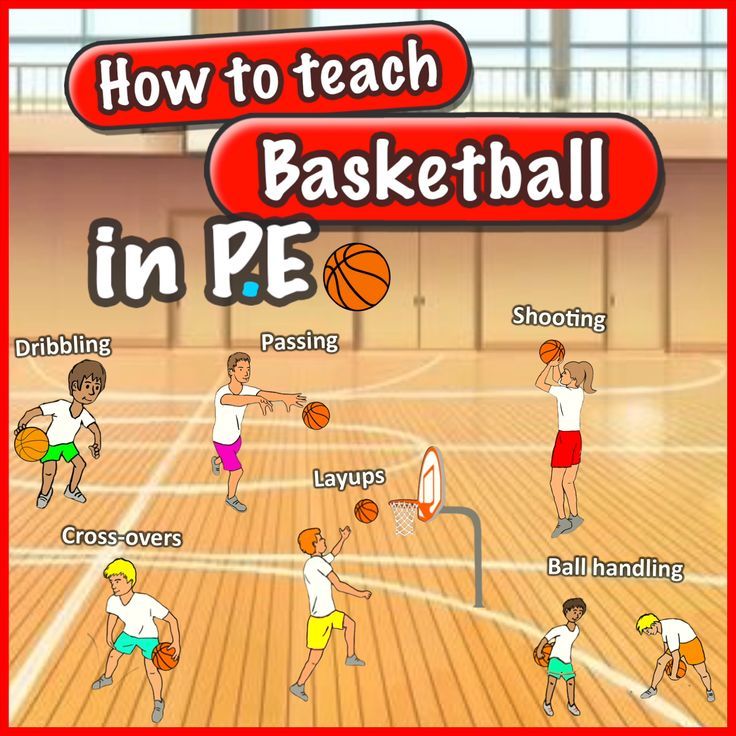 The pre-shot routine is basically whatver you’re comfortable doing to prepare for the free throw. Once you’ve completed your pre-shot routine, you need to start by taking a deep breath in order to relax your body.
The pre-shot routine is basically whatver you’re comfortable doing to prepare for the free throw. Once you’ve completed your pre-shot routine, you need to start by taking a deep breath in order to relax your body.
Physical mechanics
The second thing you need to have for a perfect free throw are physical mechanics. Physical mechanics involve your body balance and your body position, as well as the mechanics that you use with your arms and legs to complete the repetition of the free throw.
A common acronym for free throw shooting is called BEEF. “B” means you have good body balance. Your feet are shoulders’ width apart, and you line up your right foot, if you’re right-handed, on the middle nail hole.
The E stands for elbow in. The elbows should be inside of the knee, as this helps you finish your free throw shot in a straight line.
The second E stands for eyes on the target, which is the middle hook on the back of the rim.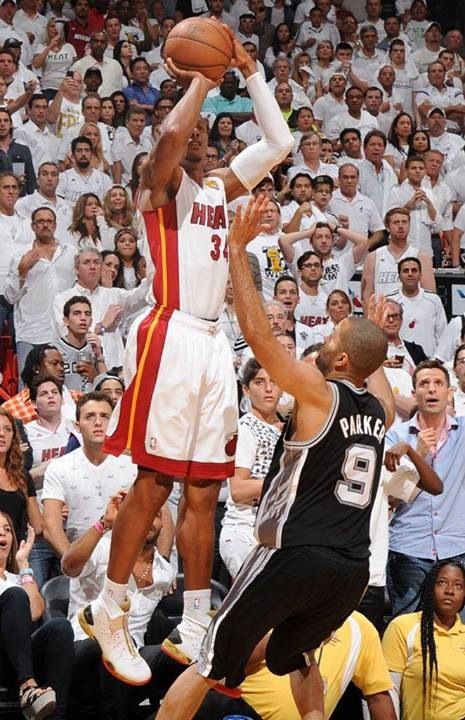 We want to aim at the middle hook because when a player puts backspin on the ball, which is what you’re taught to do if you’re a good shooter, and the ball makes contact with the rim, it will hit the back of the rim and it will spin backwards with the backspin into the cylinder.
We want to aim at the middle hook because when a player puts backspin on the ball, which is what you’re taught to do if you’re a good shooter, and the ball makes contact with the rim, it will hit the back of the rim and it will spin backwards with the backspin into the cylinder.
The opposite of this is when you aim at the front of the rim. When the ball makes contact with the front of the rim, the ball will impact to the rim and, with backspin, spin backwards away from the cylinder, allowing you not to complete your free throw.
The final part of your free throw with physical mechanics is the follow-through. You must have and maintain good follow-through in order to be a successful free throw shooter.
Mental mechanics
The third part of being a great free throw shooter involves mental mechanics, which is what helps you concentrate better on the free throw, and not the pressure of the game situation.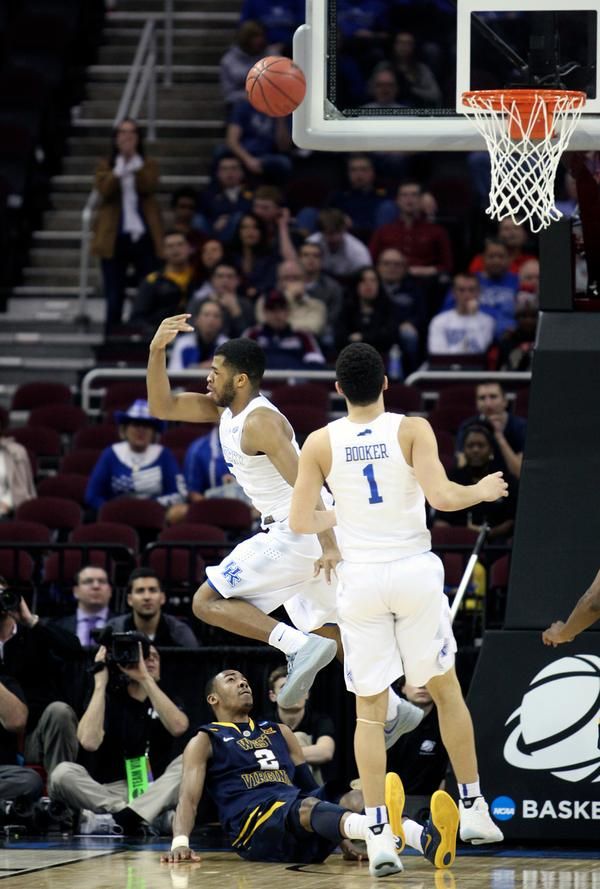 We’ve developed five words that allow you to concentrate on the mental processes of the free throw. These five words also allow you to say the words to yourself as you’re conducting the physical mechanics of the free throw at the same time. The five words are:“ Elbow In, Bend, Follow Through
We’ve developed five words that allow you to concentrate on the mental processes of the free throw. These five words also allow you to say the words to yourself as you’re conducting the physical mechanics of the free throw at the same time. The five words are:“ Elbow In, Bend, Follow Through
After their pre-shot routine and taking their deep breath, the player will go to a position with their knees locked and they will break their elbow in or tuck their elbow in as they say “elbow in.” Players want the elbow inside the knee, not directly above the knee in the set position or outside of the knee. In either one of these cases, it’ll force a player to possibly finish with their arm shooting to the side. By having your elbow in, a player will finish their shot in a straight line with their toe, their knee, their elbow and the ball to the back of the rim.
The second part of mental mechanics is bend. Players keep their knees locked in an elbow in position is so when they come to the bend part of the free throw, their physical mechanics are identical every time they shoot the ball.
The third part of mental mechanics that you say to yourself is to followthrough. This helps you focus all of your mental concentration on the physical act of backspin on the ball and following through with your shot.
When you learn to be consistent in how you shoot your free throw, you will then become perfectly consistent in how well you shoot your free throw. We want to eliminate negative thoughts as a player shoots a free throw by implementing positive thoughts and mental mechanics that will incorporate the physical mechanics and the rhythm and timing of a perfect free throw.
Rhythym and Timing
The fourth area of the foul shot is the rhythm and timing in which you shoot the free throw. We’re trying to minimize the amount of movement every time we shoot a free throw so that we minimize the amount of errors that can take place.
We’re also trying to make consistent the timing of our free throw so that it is exactly the same every time we shoot the ball. This, additionally, will help us to shoot the ball more consistently.
This, additionally, will help us to shoot the ball more consistently.
Our rhythm and timing needs to be incorporated not only into our mental mechanics, but also into our physical mechanics.
Practice
Practice is the fifth and final element of becoming a great free throw shooter. It’s best to incorporate free throw practice within your normal workout routines so that you can incorporate game situations. In a normal game situation, you’re shooting free throws when you’re winded, fatigued, and a little bit tired. So we want to practice a drill at full intensity and speed, and rest on our free throws.
Watch for my next article on Free Throw Practice Drills coming soon!“ Have a question about free throws and foul shooting?“ Ask it below, and I’ll answer it in the next article!“ And don’t forget to Follow Me on Twitter, where I will share more great Basketball tips & techniques!
Execution technique, player placement, points, distance to the ring
Home / All sports / Basketball free throw: execution technique, player placement, points, distance to the ring
01/19/2020 All sports Leave a comment 56,713 Views
Share with friends
A basketball free throw is a shot taken by one player of the fouled team.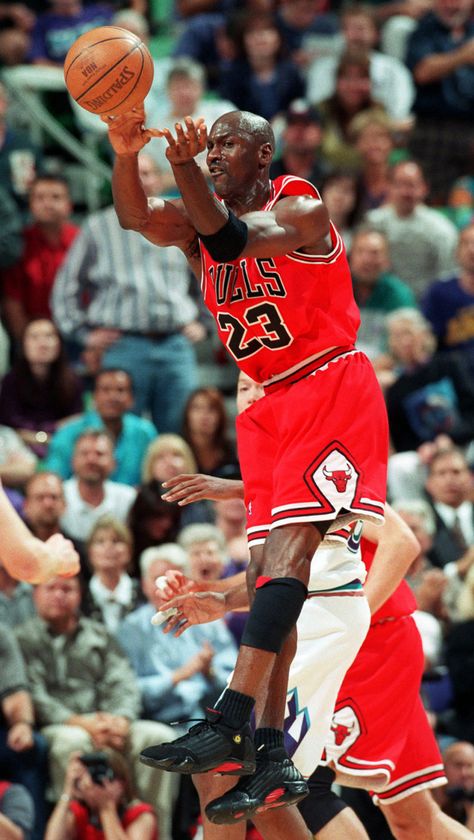 Free throws differ from game throws by the number of points awarded. From the game, a basketball player can write down 2 or 3 points to his account, and each realized penalty brings only 1 point. A free throw is always made from a certain place on the court - the free throw line, and none of the players of the opposite team should interfere with its implementation, that is, this is a kind of penalty kick in which the player with the ball fights against the ring with a shield.
Free throws differ from game throws by the number of points awarded. From the game, a basketball player can write down 2 or 3 points to his account, and each realized penalty brings only 1 point. A free throw is always made from a certain place on the court - the free throw line, and none of the players of the opposite team should interfere with its implementation, that is, this is a kind of penalty kick in which the player with the ball fights against the ring with a shield.
The ability to shoot free throws is one of the most important skills a professional basketball player should have. The implementation of such a penalty can determine the outcome of the game, although it is not always easy to execute such a technical element, especially due to pressure from the stands. To throw the ball into the ring, the player must have confidence, correctly set throwing technique and good concentration. Even some of the most famous and experienced players in the NBA have trouble getting into the basket from a free kick. A good indicator is when a basketball player manages to realize 75-80% of all shots, and when the statistical indicator is below 50%, then such persons, with a high degree of probability, will rest on the bench at the end of the match.
A good indicator is when a basketball player manages to realize 75-80% of all shots, and when the statistical indicator is below 50%, then such persons, with a high degree of probability, will rest on the bench at the end of the match.
How many free throws are there in basketball?
Let's start with the fact that all free throws are taken from a certain line, which is part of the basketball court markings. At a distance of 4.6 meters from the ring and 5.8 meters from the end line there is a free-throw line 3.6 meters long.
If a player breaks the rules, free throws are awarded to his team. The number of shots fired depends on where and how the foul was committed.
- 1 free throw - a player was fouled, who managed to throw the ball into the basket and hit it. Also, with a technical foul, 1 throw is given.
- 2 shots - awarded when a player is fouled on a shot and missed. Also, 2 throws are assigned when a violation of the rules occurs on an athlete who did not plan to throw the ball into the basket, and the team of the offending basketball player has more than 5 fouls.
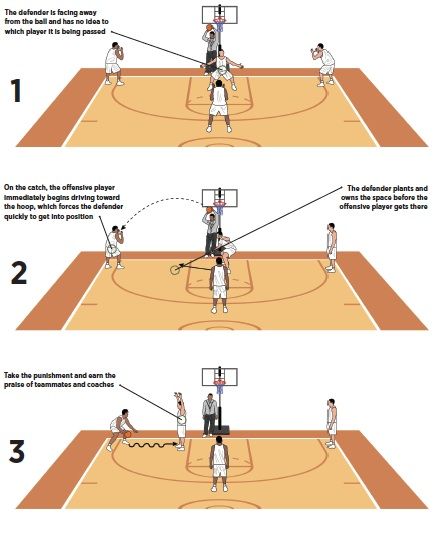
- 3 Throws - When an athlete about to take a throw is fouled outside the 3-point zone. If the throw is not accurate, then 3 penalties are awarded.
Note that when a basketball player who has committed 5 personal or technical fouls (6 offenses in the National Basketball Association - NBA) or 2 unsportsmanlike fouls in a match, must leave the playing court and no longer enter it, while he is allowed to remain on the bench .
Dimensions of the basketball court in meters (FIBA and NBA standard)
Position of players during a free throw in basketball
During the execution of a free throw, all players on the court must take certain positions. Along the free throw lane, on the sides of the so-called rectangle from the line to the ring, there are 5 players: 3 from the defending team and 2 from the attacking team. Closer to the ring on both sides are the basketball players of the defending side, in the middle there are 2 attackers and one more defender on the right or left closer to the thrower. All other players from both teams must be outside the 3-point zone.
All other players from both teams must be outside the 3-point zone.
Basketball free throw technique
Free throw can decide the outcome of a single match, so it is important to understand that such a technical element should not be ignored, but rather needs to be constantly trained and improved. Approaching the free-throw line, concentrating and accurately putting the ball in the basket is a difficult task for many players, even top professionals. The free throw is the only opportunity in basketball where the defense can in no way interfere with throwing the ball into the rings and scoring a point. Below are the techniques for throwing in stages with important tips:
- Mentally focus on the execution of the next throw. Force yourself not to worry and pay attention to others, especially loud fans of the opposing team.
- Relax. Every basketball player should be familiar with the relaxation techniques, you need to learn a certain breathing technique that will reduce nervousness and tension.

- Body alignment. It is important for the thrower to align his body at the free-throw line. Statistical studies show that correct body position significantly increases a player's chances of making an accurate shot. The legs should be shoulder-width apart, and the fingers should be located at a distance of 3-5 centimeters from the line. Also, the legs should be slightly bent at the knees.
- Bend the pushing arm at the elbow pointing straight at the ring. The elbows tend to swing out to the sides and it is important to keep them close to the body before throwing.
- Eyes are best focused directly on the target. Decide right away how you want to hit: immediately into the ring or with a rebound from the shield. With practice, you will begin to feel more confident in the stance and will not need to pay much attention to the location of the elbows. This in turn improves accuracy.
- Execution. The legs are unbent at the knees, the elbow is straightened, then the hand comes, and the ball is pushed out with the fingertips.
 It is important to do all this in one smooth movement, and you need to make sure that your legs do not come off the floor.
It is important to do all this in one smooth movement, and you need to make sure that your legs do not come off the floor.
These are the simple rules for shooting free throws in basketball. By following them and regularly practicing this technical element, you will eventually begin to hit the ring more often, or even completely forget what a miss is.
Rules of the game of basketball briefly and clearly in paragraphs
2020-01-19
Check also
Share with friendsThe rematch of Usyk vs Joshua will take place on August 20, 2022. The arena for the grand ...
free throws, definition, rule, penalty
43.1 Definition
43.1.1 A free throw is an opportunity given to a player to score 1 point by shooting into the basket inside the semi-circle and free throw line without interference from position inside the half-throw line and free throw.
43.1.2 Free throws are all free throws and/or subsequent possession of the ball resulting from a 1 foul penalty.
43.2 Rule
43.2.1 When a personal foul is called, the penalty for which is a free throw(s): take the free throw(s).
• If requested to be substituted, he must attempt the free throw(s) before leaving the game.
• If he must leave the game due to injury, 5 fouls or disqualification, then the substitute player must attempt the free throw(s). If a team has no more spares left, the free throw(s) shall be taken by any player of that team, designated by its coach.
43.2.2 When a technical foul is called, any member of the opposing team designated by its coach shall attempt a free throw.
43.2.3 The player taking the free throw must:
• Stand behind the free throw line and inside the semicircle.
• Use any method of taking a free throw in such a way that the ball enters the basket from above or touches the ring.
• Release the ball from the hands within 5 seconds from the moment it was placed by the referee at his disposal.
• Do not touch the free throw line or enter the restricted area until the ball has entered the basket or touched the ring.
• Do not simulate a free throw.
43.2.4 Players on the free throw rebounding spots are entitled to alternate positions on those spots 1 meter deep, as shown in Diag. 6.
During free throws, these players must not:
• Take up free throw rebounding positions that are not intended for them.
• Enter the restricted area, neutral zone or leave a free throw rebounding area until the ball has left the free throw shooter's hand(s).
• Interfere with a player taking a free throw.
43.2.5 Players not in free throw rebounding positions must remain behind the free-throw line extension and behind the 3-point field goal line until the free throw will end.
43.2.6 During a free throw(s) to be followed by another free throw(s) or throw-in , all players must remain behind the imaginary extension of the free throw line and behind the 3-point field goal line.
Non-compliance Art. 43.2.3, 43.2.4, 43.2.5 and 43.2.6 is a violation.
43.3 Punishment
43.3.1 If the penalty throw is successful and violation (-y) is performed (-t) by a player performing the penalty throw, then the point is not counted.
Any other player's offense that occurs immediately before, at approximately the same time, or after the free throw shooter commits the offense shall be disregarded.
The ball is awarded to the opponents for a throw-in at the free-throw line unless further free throw(s) or possession penalty is to be taken.
43.3.2 If the free throw is successful and the foul(s) are committed by any player(s) other than the player taking the free throw, then:
• If the ball hits the basket, a point is scored.